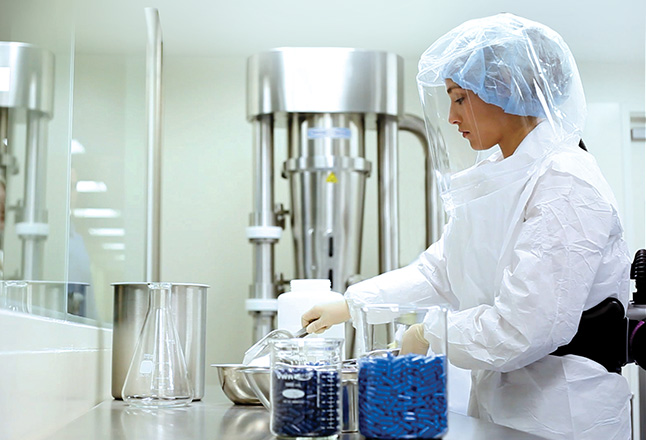
In the pharmaceutical manufacturing sector, the safety and protection of employees are paramount, particularly as the industry grapples with the handling of increasingly potent compounds.
This blog post examines the pivotal role of Powered Air-Purifying Respirators (PAPRs) in enhancing workplace safety, with a focus on their use in environments involving Active Pharmaceutical Ingredients (APIs), Highly Active Pharmaceutical Ingredients (HAPIs), and Antibody-Drug Conjugates (ADCs). Highlighting the Sentinel XT Clear Hood and the latest advancements in PAPR technology, we discuss how these tools are essential in meeting the growing demands for higher protection levels, comfort, and ergonomic design in high-risk pharmaceutical settings. Below is a detailed discussion and a video presentation on the necessity of adopting advanced PPE solutions to ensure the well-being of pharmaceutical workers.
How has the demand of PPE evolved in the pharmaceutical sector?

Daniel Jamison, Director of Business Development at ILC Dover: “PPE demands have increased partly due to the rise in drug toxicity and heightened standards for protection, necessitating more protective PPE options like PAPR systems. Companies are keen on offering better protection for their employees, and utilizing a PAPR is an effective way to meet this goal. This is particularly evident in applications involving APIs, HPAPIs, and ADCs in their manufacturing processes. With the API market expected to grow by almost 7% in the next decade, the demand for PAPR systems is also anticipated to rise.”
What are the key differences between standard respiratory protection and respirator protection specifically designed for use in the pharmaceutical industry?
DJ: “Many pharmaceutical production applications require a higher level of protection, often seeking an assigned protection factor of 1,000. This need typically favors the use of PAPRs over unpowered and disposable air-purifying respirators. Furthermore, comfort and ergonomics are crucial in the pharmaceutical industry, where workers may wear respirators for extended periods. Designs like the Sentinel XT Clear Hood feature a free-floating hood, which avoids the fatigue and pressure points associated with ratcheted adjustment systems and conventional headband suspension systems. Particularly for CMOs and CDMOs, there’s a concern about cross-contamination between different production runs, necessitating more frequent hood disposal or surfaces that are easy to clean.”
What are the common challenges pharmaceutical professionals face when selecting and using PPE and papers and how does ILC Dover address them?
DJ: “Many facilities reconfigure their production suites when transitioning from one drug to another, a common practice in CMOs. In these suites, employees navigate around various production equipment in tight spaces that vary with each production run. These conditions can significantly contribute to workplace injuries while wearing respiratory protection. To mitigate these risks, EHS managers seek solutions that offer a greater field of view for improved visibility, thereby reducing the likelihood of workplace injuries.”

How do PAPRs enhance the safety of workers in pharmaceutical environments compared to traditional respirators?
DJ: “PAPR systems provide a higher level of protection due to the positive pressure airflow inside the hood, enhancing the reliability of achieving higher protection levels as they are not fit-dependent. Unlike tight-fitting negative pressure respirators that require fit testing and rely heavily on proper donning, PAPRs also offer a broader field of view compared to traditional negative pressure full-facepiece respirators.”
What best practices would you recommend for the maintenance and longevity of PPE and PAPRs in a pharmaceutical setting?
DJ: “Essential aspects include proper training on donning and doffing, cleaning and decontamination, and proper storage as per OSHA regulations 1910.134.”

How do you foresee the future of PPE and PAPRs in the pharmaceutical industry, especially with the advent of new technologies and materials?
DJ: “The continued search for PPE that offers higher levels of protection while ensuring increased comfort and visibility is evident. Advancements in technology will enable systems to be more compact and lightweight, with improved electronics making respirators smarter. Developments in lithium battery technology will contribute to lighter weight systems. Additionally, future advancements in clear films could allow for a wider field of view with hoods, further enhancing worker safety and reducing injuries.”
Do you offer any training programs for the effective use of PPE and PAPRs?
DJ: “Training remains a critical component in ensuring equipment performance and instilling a sense of safety and confidence among workers. ILC Dover provides comprehensive implementation training for all new customers, including shift work training and annual sessions based on user needs.”

